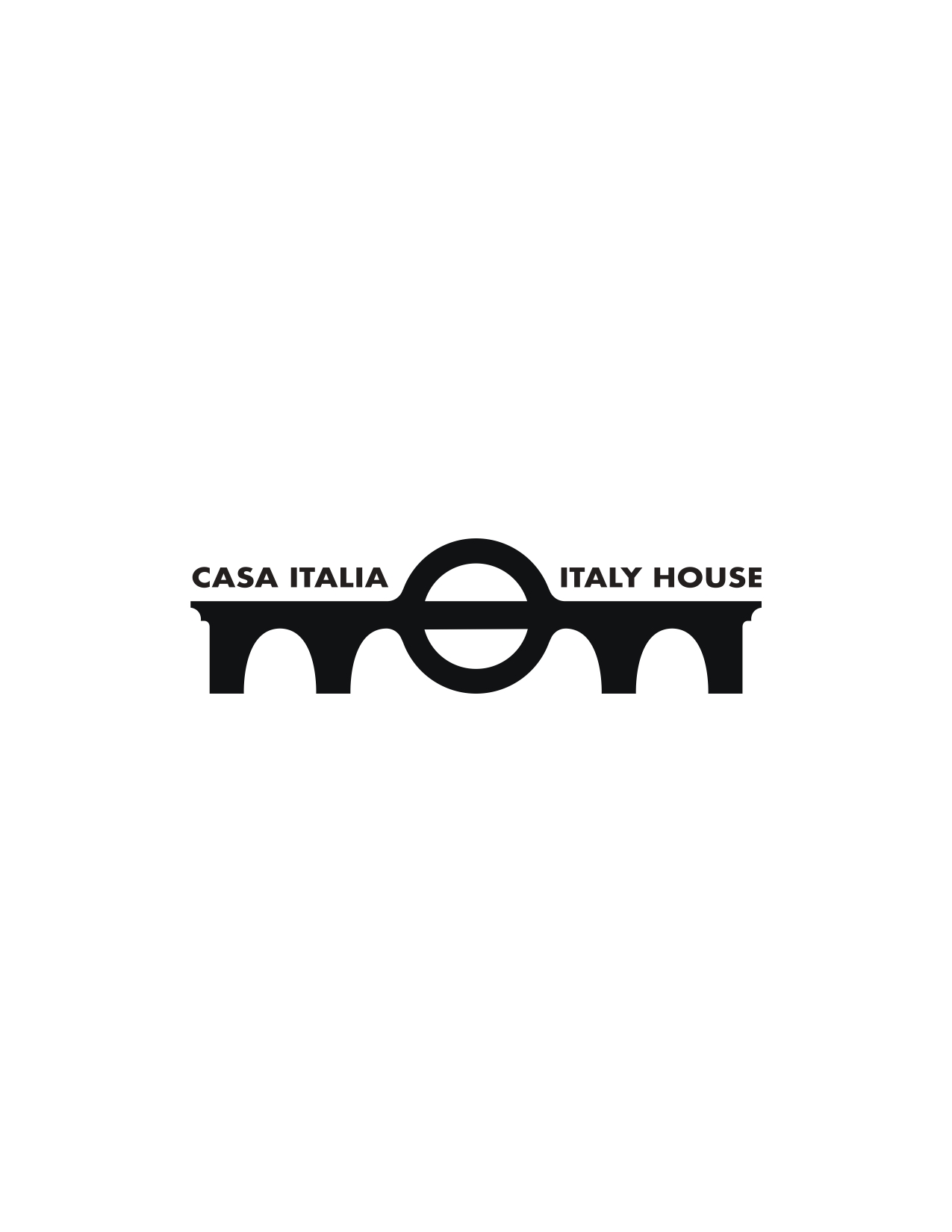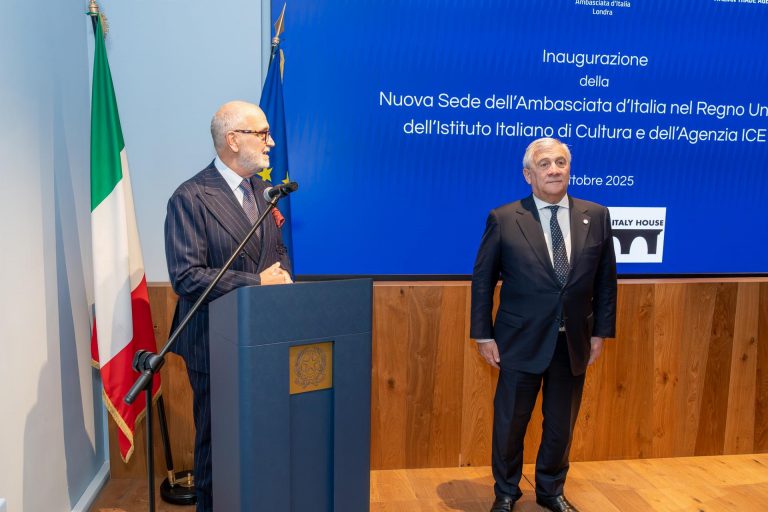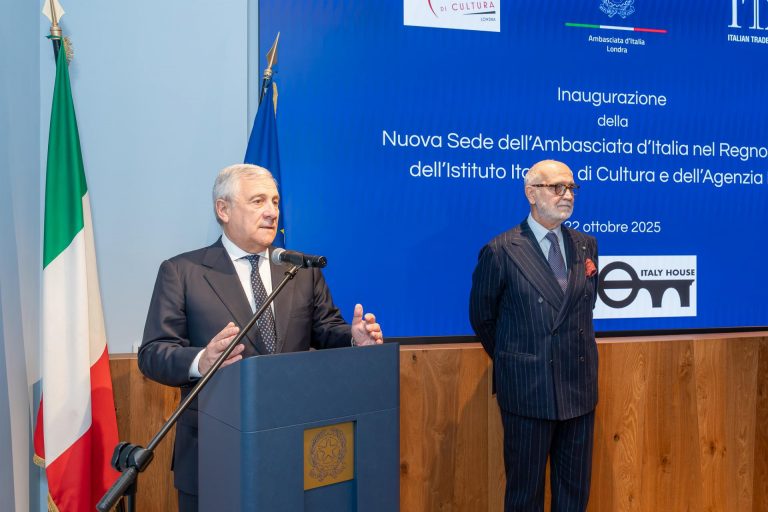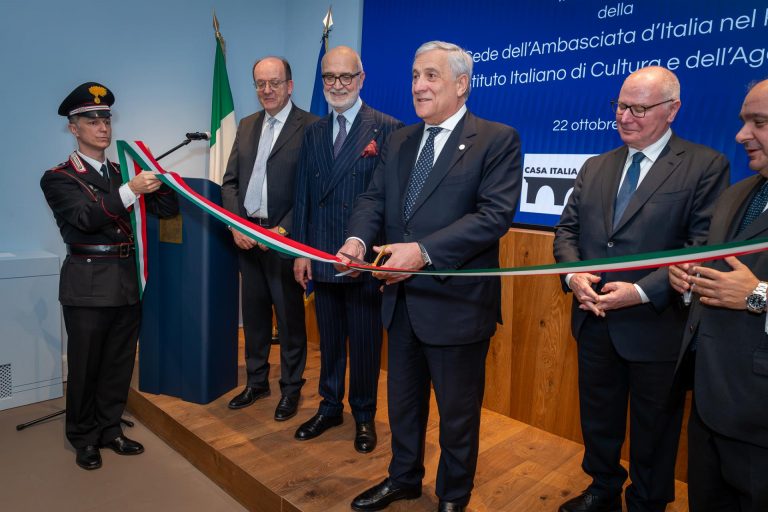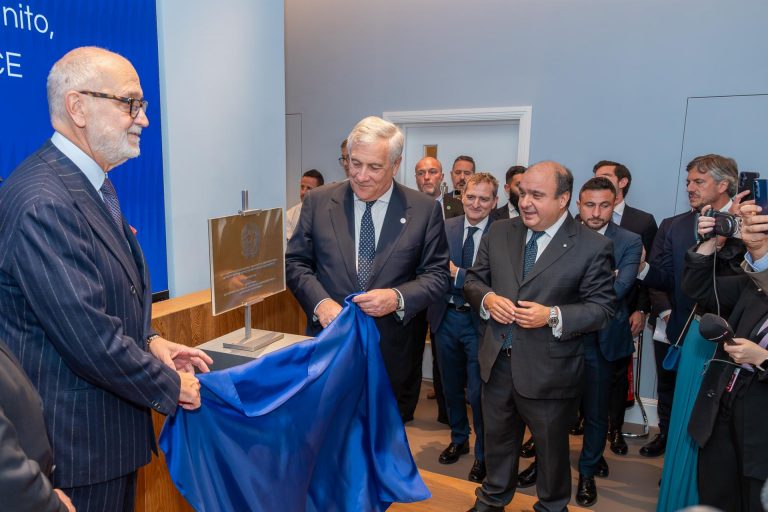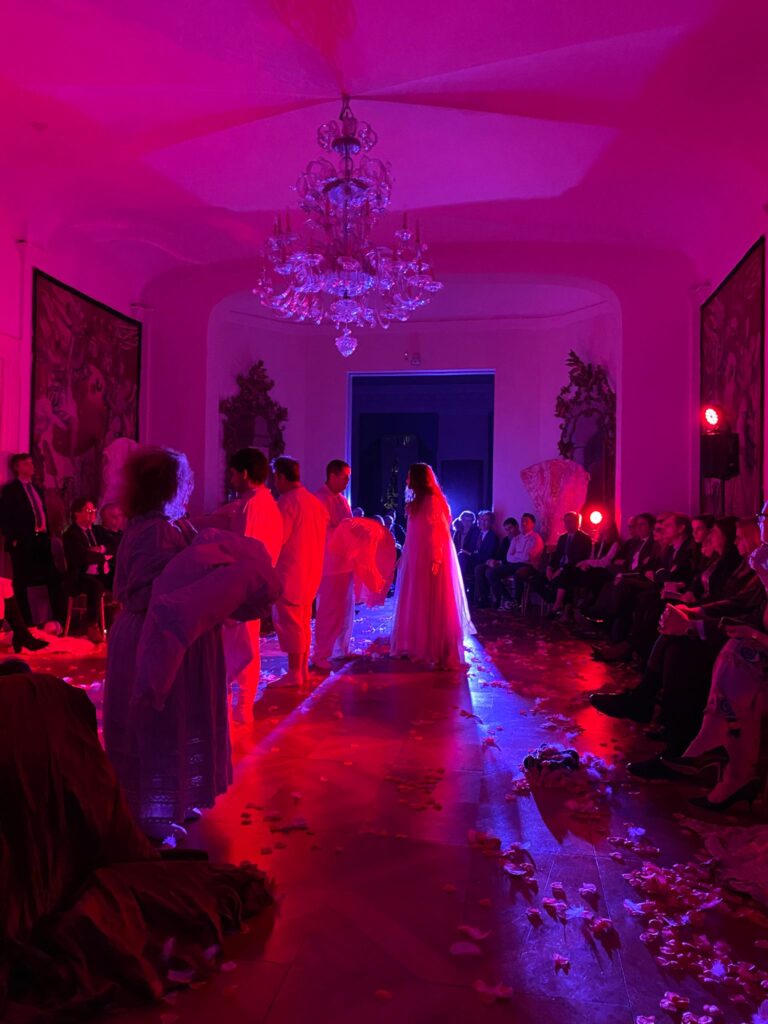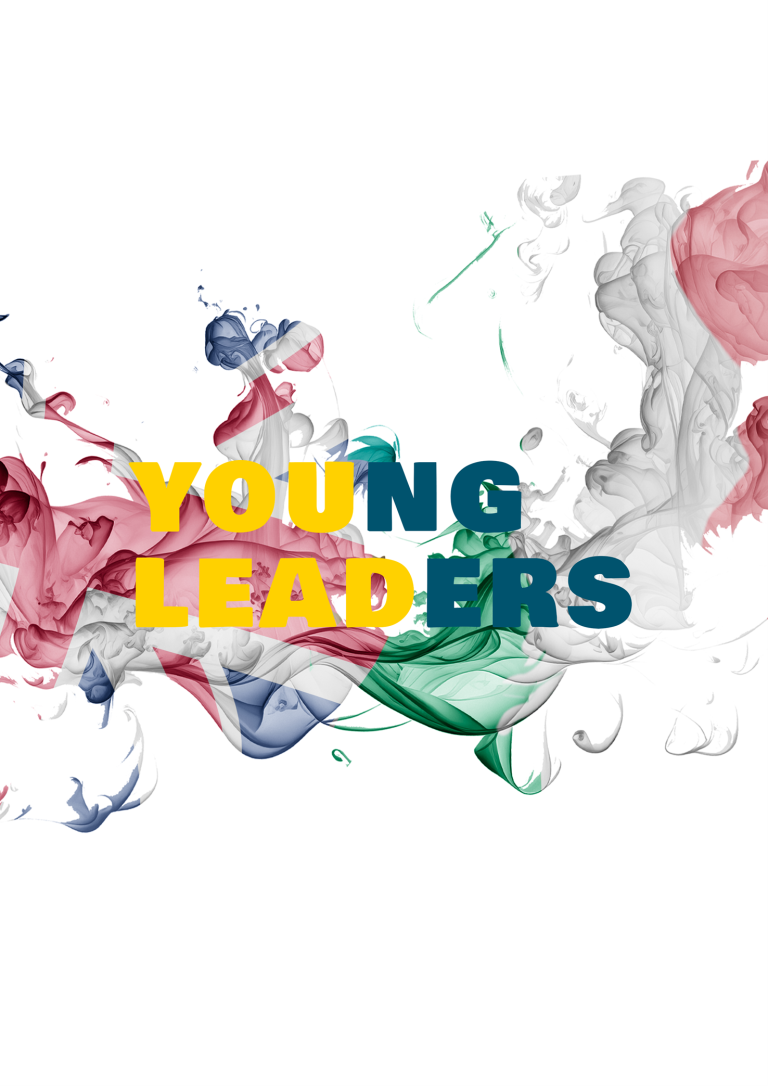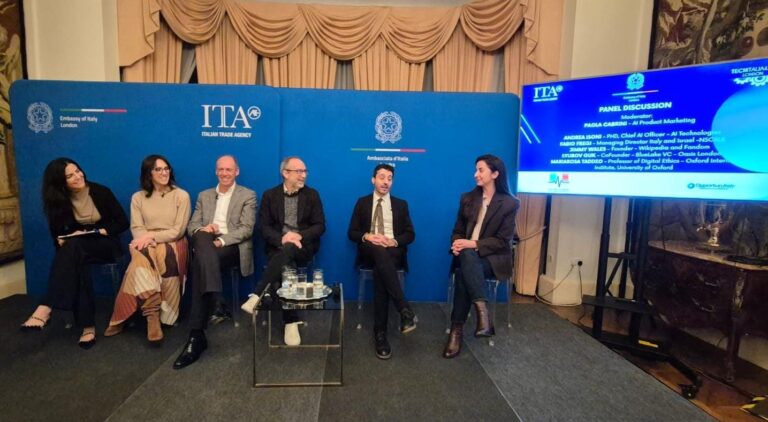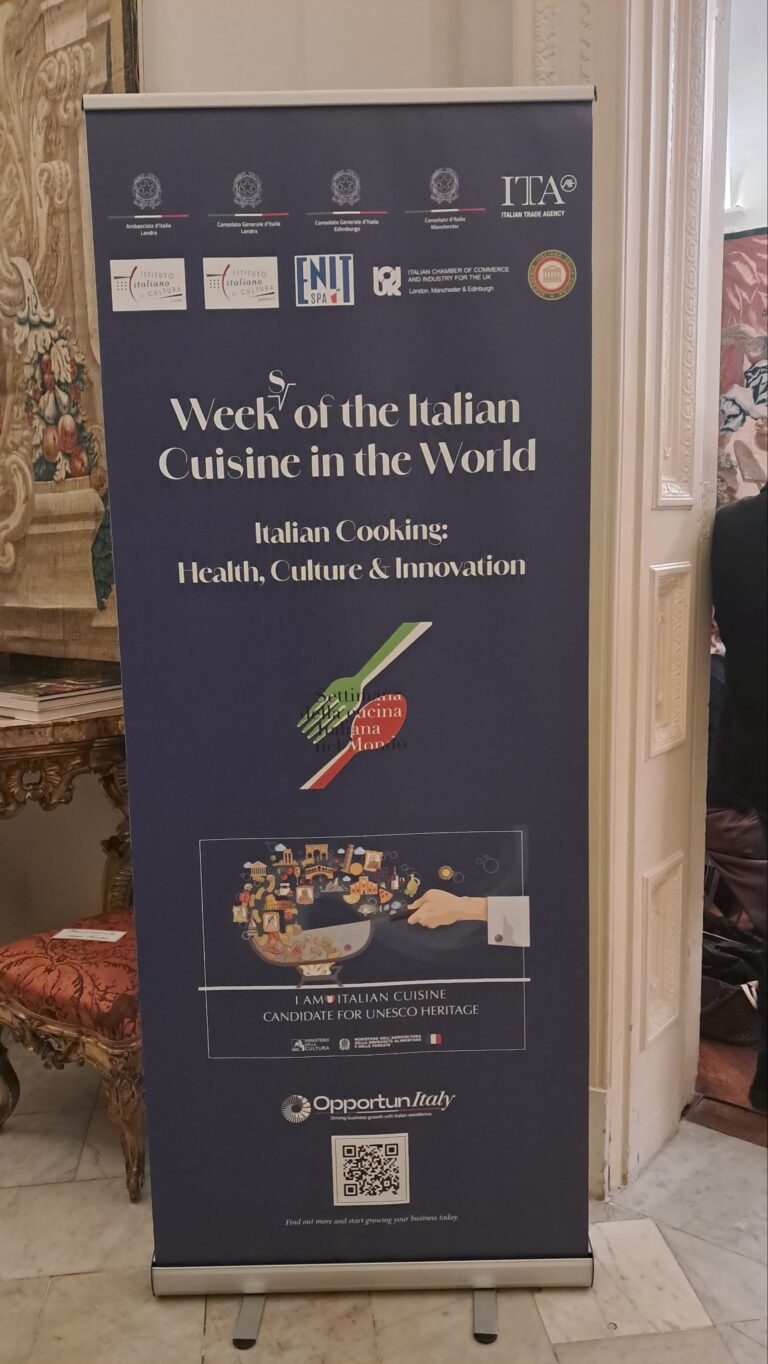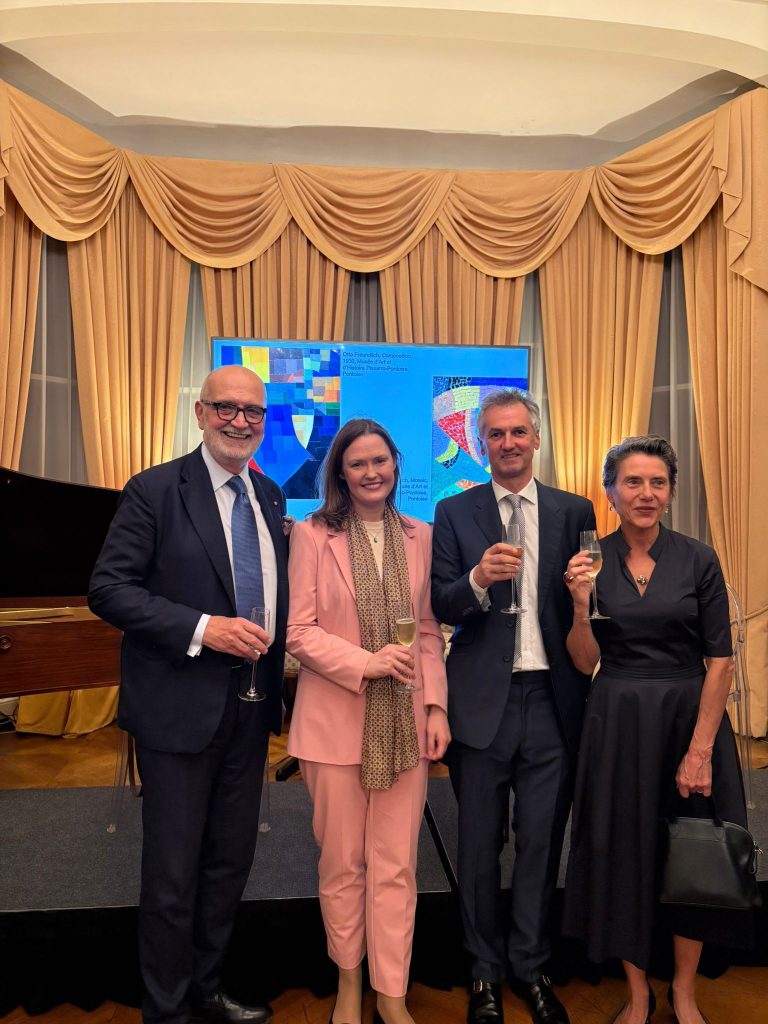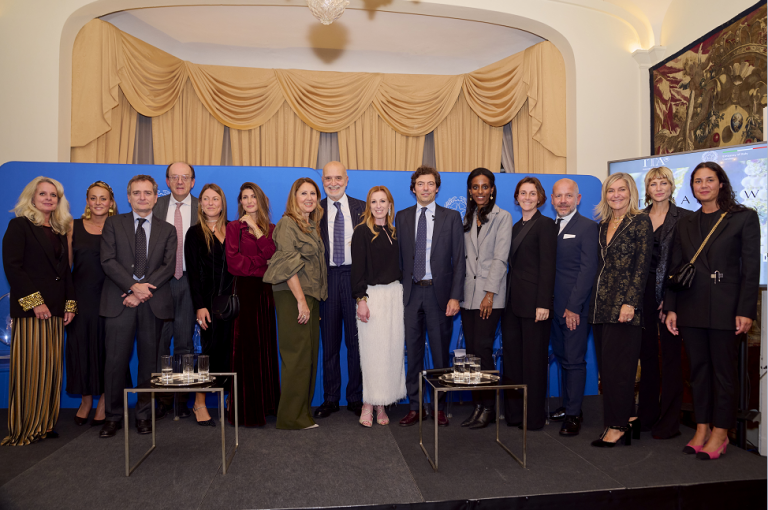On 22 October 2025 Italy House was inaugurated by Antonio Tajani, Deputy Prime Minister and Minister of Foreign Affairs and International Cooperation. Italy House, opposite Buckingham Palace, in the heart of the UK’s political and institutional hub, will be the new premises of the Embassy, the Italian Cultural Institute and the Italian Trade Agency.
It will bring together all the components of the Sistema Italia, providing a focal point for the promotion of Italy at economic, cultural, artistic and social levels. It is the result of a joint effort between the Ministry of Foreign Affairs, the Embassy of Italy, the Italian Cultural Institute and ITA, as well as high-profile Italian design and interior decor companies, and Italian and British museums. It will be open to all: representatives of institutions, entrepreneurs, citizens, students, academics, scientists, sports personalities, journalists, and representatives of the world of art and culture.
The result is a space that brings merges institutional identity and Italian design and creativity, presenting Italy through its craftsmen, materials, elegant innovation, and ability to harmoniously incorporate elements of British art. It is a workplace designed to offer a balance between aesthetics and functionality.
The new spaces, characterised by modern architecture and natural materials, are characterised by light, openness and versatility in both the shared and individual areas. The layout encourages collaboration, sharing of ideas, and concentration, offering high-tech meeting rooms, zones to facilitate encounters, and a coffee area.
Attention to detail, effective lighting and acoustic comfort ensures productivity and creativity, reflecting the values of innovation and attention to the individual that mark the vision that the Ministry of Foreign Affairs is promoting throughout the diplomatic network.
Numerous Italian companies contributed to the design, including Molteni&C, Unifor, Cassina, Tecno, Poltrona Frau, Porro, De Padova, Saporiti Italia, Citterio, Alias, Rubelli, Flos, Alpi, Listone Giordano, Marsotto, Glas Italia, Olivari, Karakter, Acerbis, Tacchini, Azucena, Giobagnara, CC-Tapis and Robertosport.
The coffee areas are fitted out with equipment by two iconic Italian brands, Lavazza and Smeg.
The lighting and integrated technology solutions are designed by Flos Architectural, Formafantasma, Unifor, Citterio, Tecno. The audio equipment is by K-Array.
The materials and finishings – including Marsotto travertine, natural woods Rubelli textiles and Alpi surfaces – reflect continuity between artisinal tradition and contemporary creativity. In the lobby, a mosaic designed by Formafantasma and made by Fantini Mosaici gives a modern interpretation to this this traditional Italian decorative artform.
The art collection includes works from both public and private collections, with particular attention to dialogue betwee modern and contemporary styles.
In the Main Hall a set of works by Paolo Scheggi from the Inter-ena-cubo series (1967-1969) is displayed. In the waiting room and the offices are three works by Pietro Consagra (Controluce, 1998) and a selection of works by Arturo Vermi, including Presenza (1965) and Diario 1 (1986), as well as two works by Tino Stefanoni (Le penne – 16B, 1972; Le borse di gomma – 72B, 1973).
In the Giuseppe Verdi room Gianpaolo Pagni‘s Grande Storia dell’arte italiana (nn. 1–4, 2025) is displayed. The Eugenio Montale Library hosts a tapestry carpet from Superficie 480 (1967) by Giuseppe Capogrossi and the installation Emerging Forms (2025).
On the first floor is Color and Light (2024) by Michelangelo Pistoletto, as well as works by Riccardo Paternò Castello (Milano, 2012), Tancredi di Carcaci (EBITDA, 2025) and Antony Gormley (Receive II, 2017), as well as Spider Maximus (2020) by Achille Salvagni.
There are also loans from the Estorick Collection, with pieces by Zoran Mušič, Mario Sironi and Massimo Campigli, and a set of archeological finds provided by the Villa Giulia National Etruscan Museum: funerary urns in travertine, kylikes and amphoras with black figures (Collezione Castellani), an Etruscan vase with a lidded bowl, a loutrophorous, a bronze basin, votive heads, and a polychrome antefix.
There is also a display in the Sala Piccola of selected artworks by J. M. W. Turner and Thomas Girtin depicting Italian landscapes.
A contest was held for students at the Istituto Marangoni in London to design a logo for the new premises. The winning design, by Jamilya Orak, depicts two keys forming a bridge connecting Italy and the United Kingdom. The style recalls the architecture of Roman acqueducts and the symbol of the London Tube.
“The new Embassy premises will be a wonderful showcase and launchpad for our businesses. These spaces will allow us to build an even stronger system and engage in even closer teamwork with the rest of the Sistema Italia. Commitment to growth, exportation and the internationalisation of our country is a strategic priority,” said the Minister of Foreign Affairs during his inauguration speech.
With the new offices of the Embassy, the Cultural Institute and the ITA, the Ministry of Foreign Affairs and International Cooperation strengthens its commitment to innovation, sustainability and wellbeing, setting an example of modernity and responsibility.
Photographs: Federico Perale







